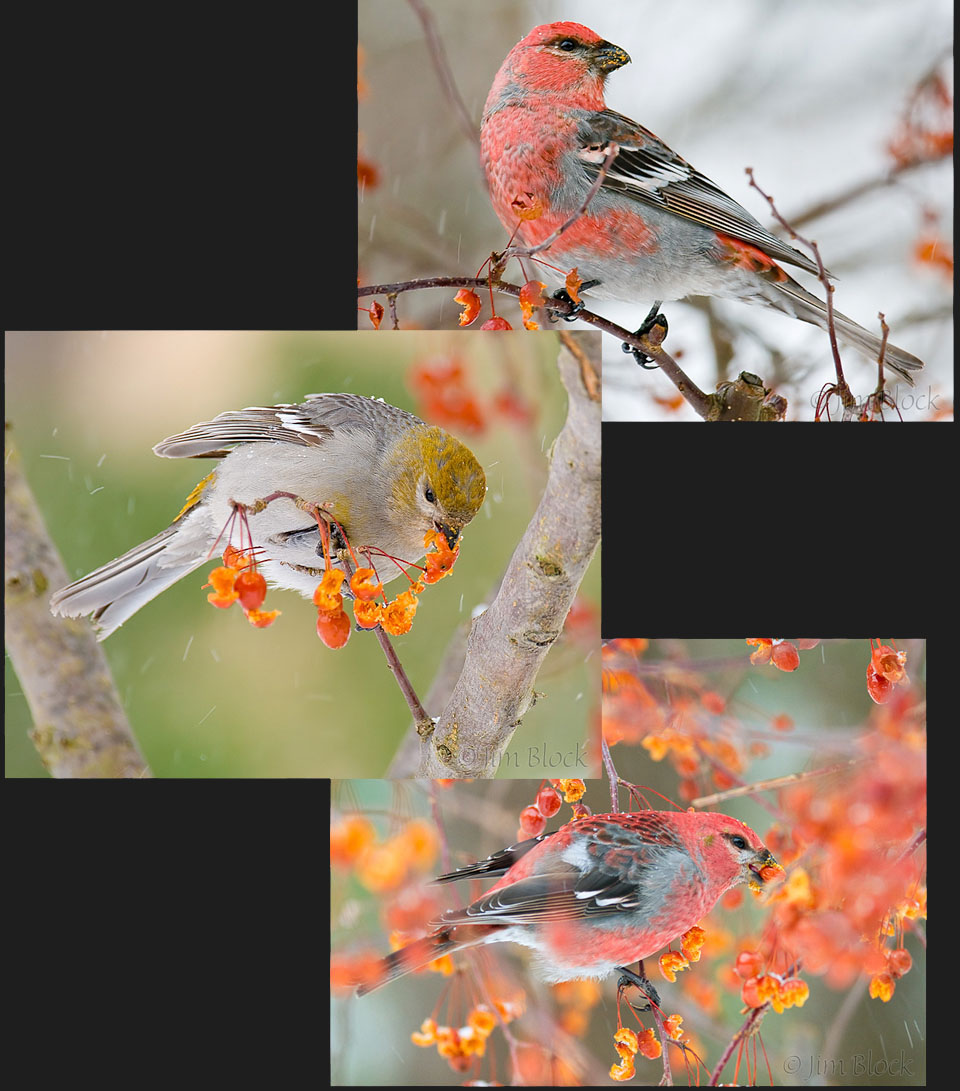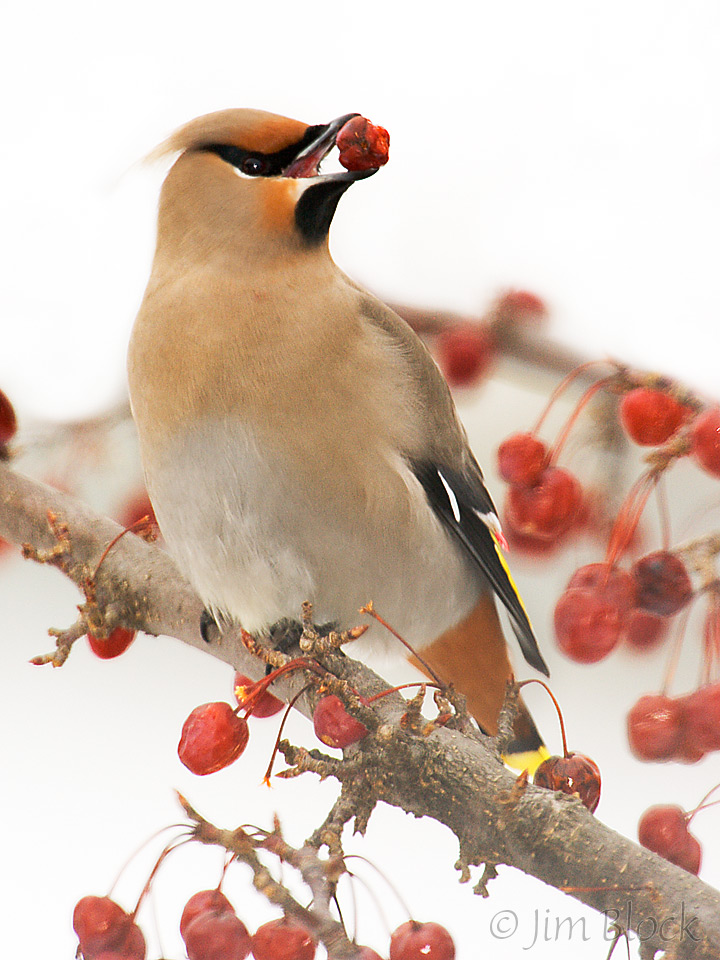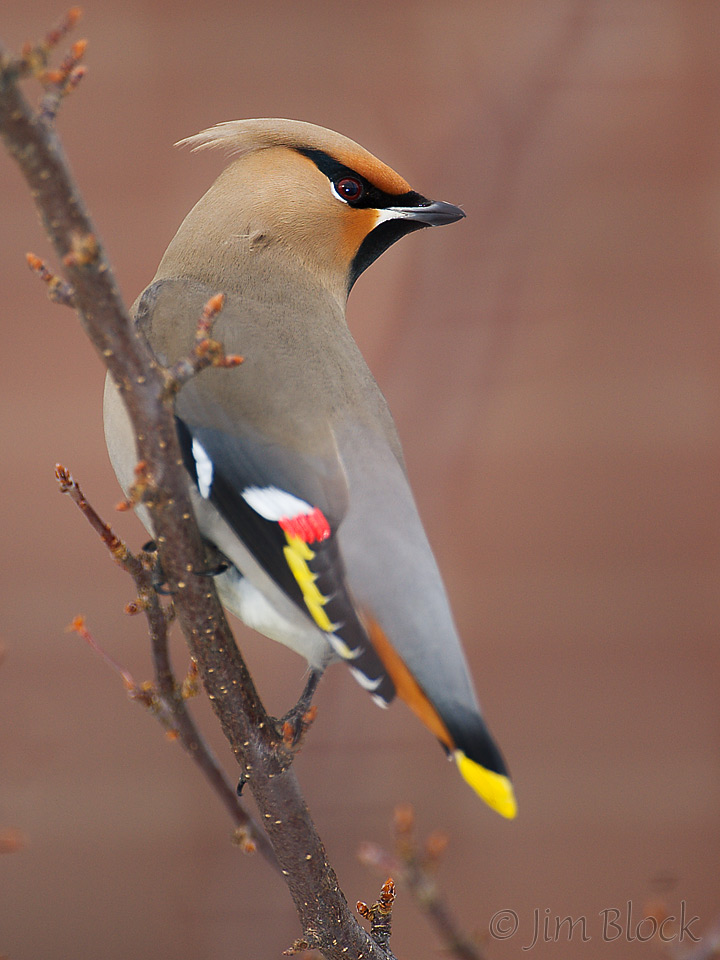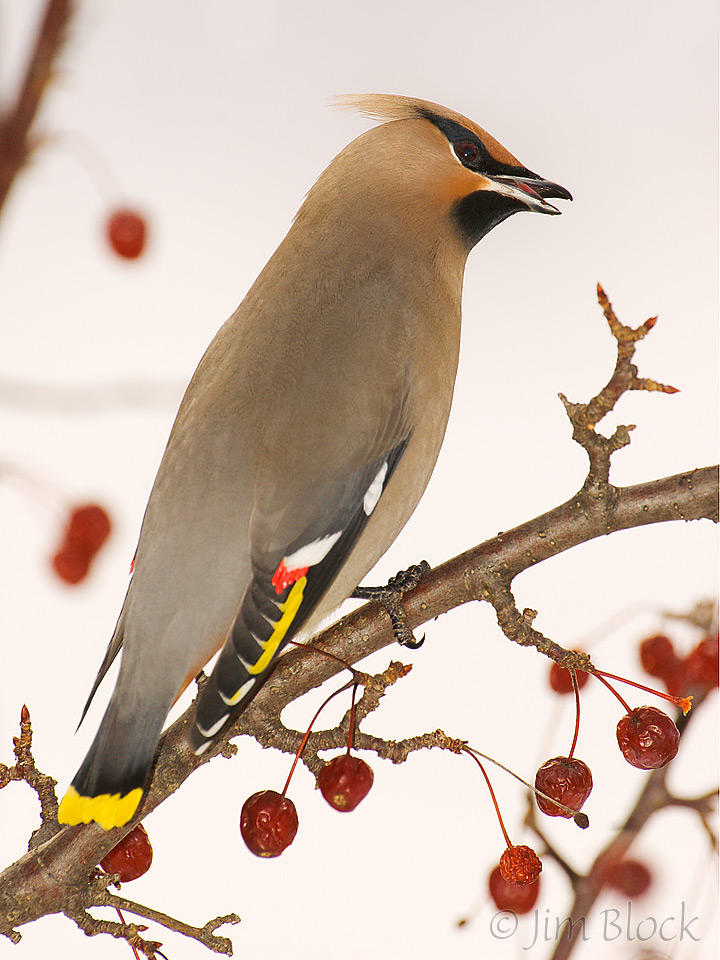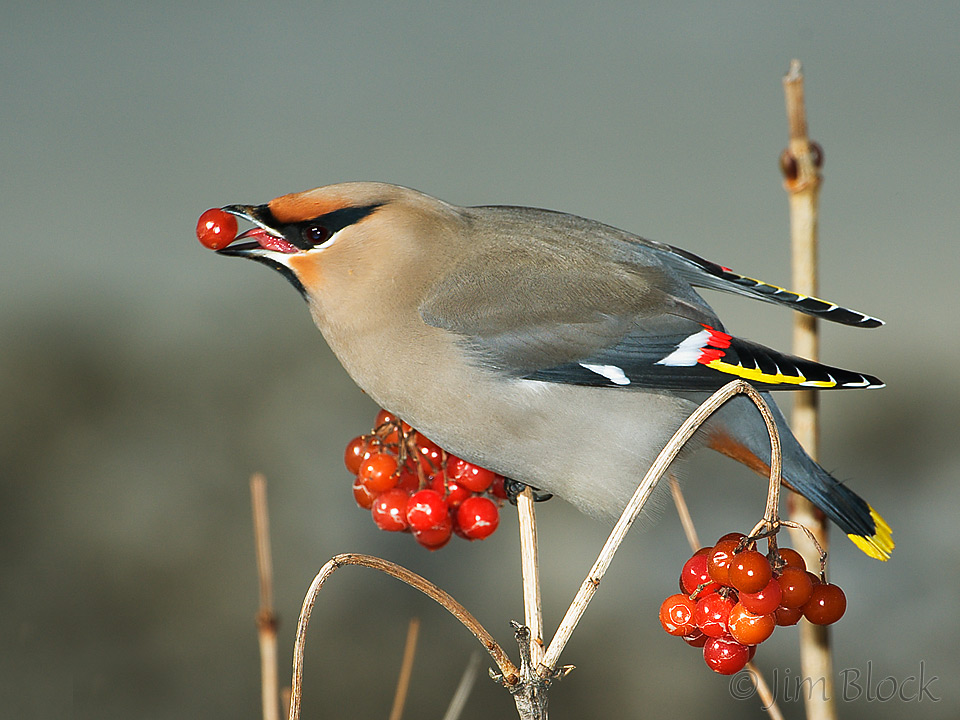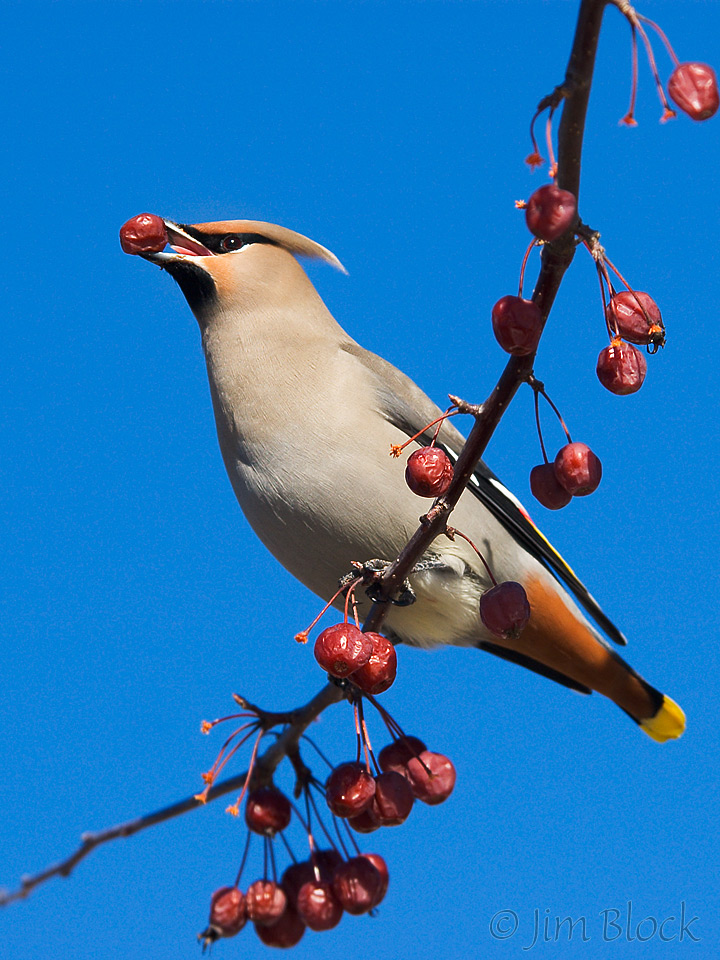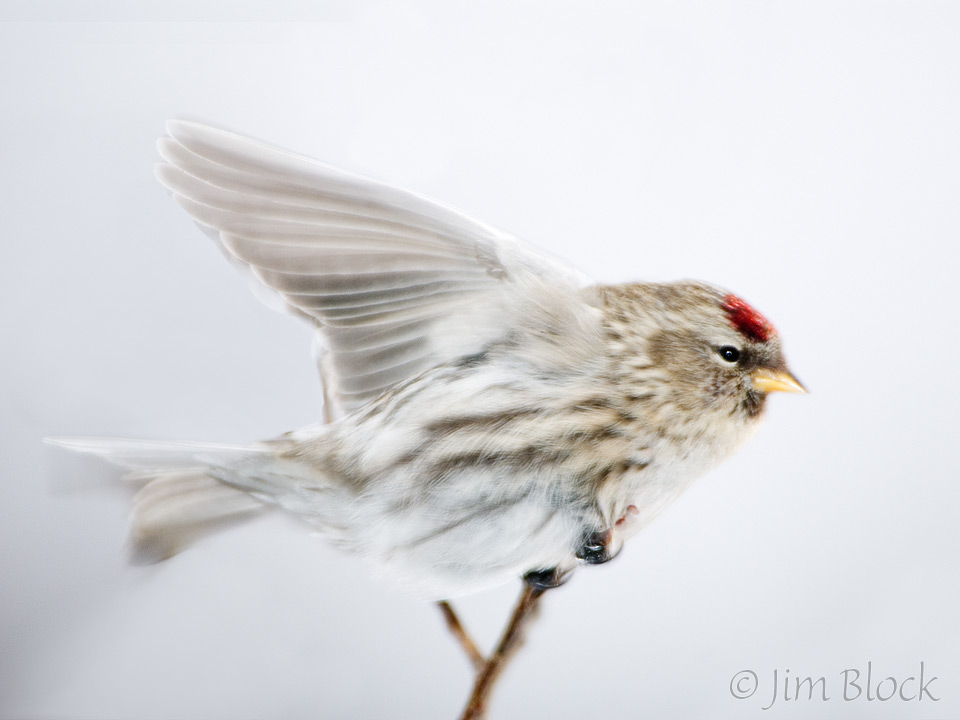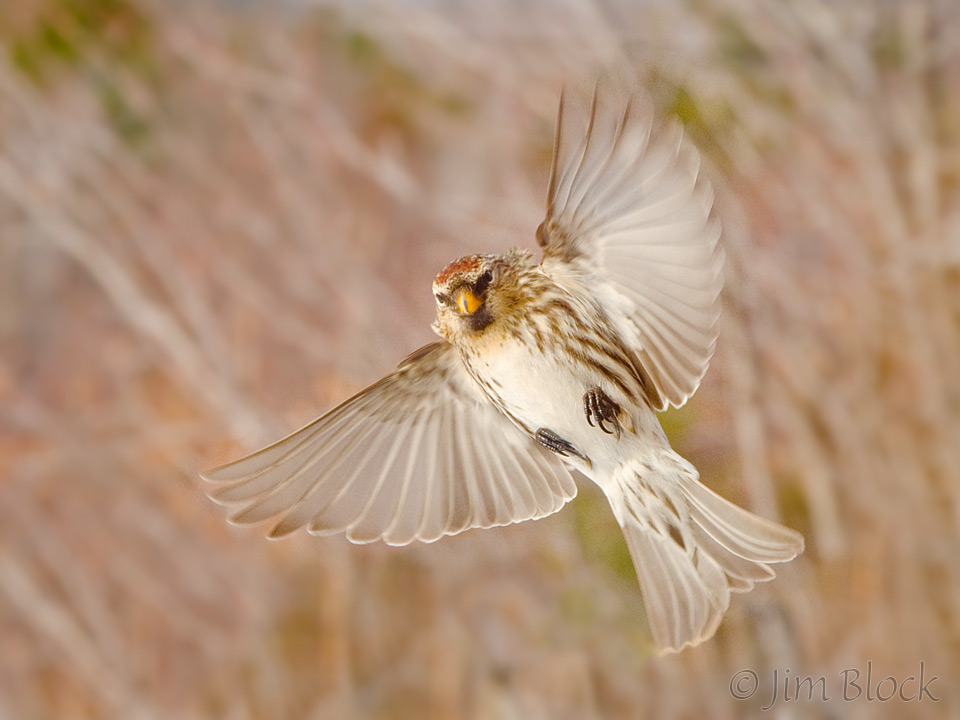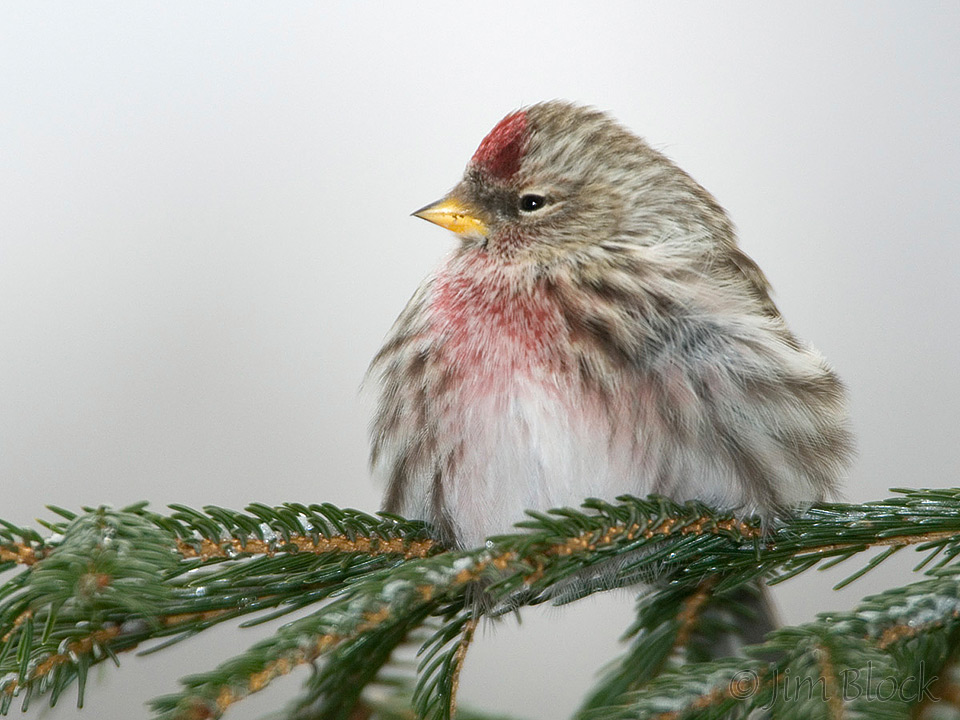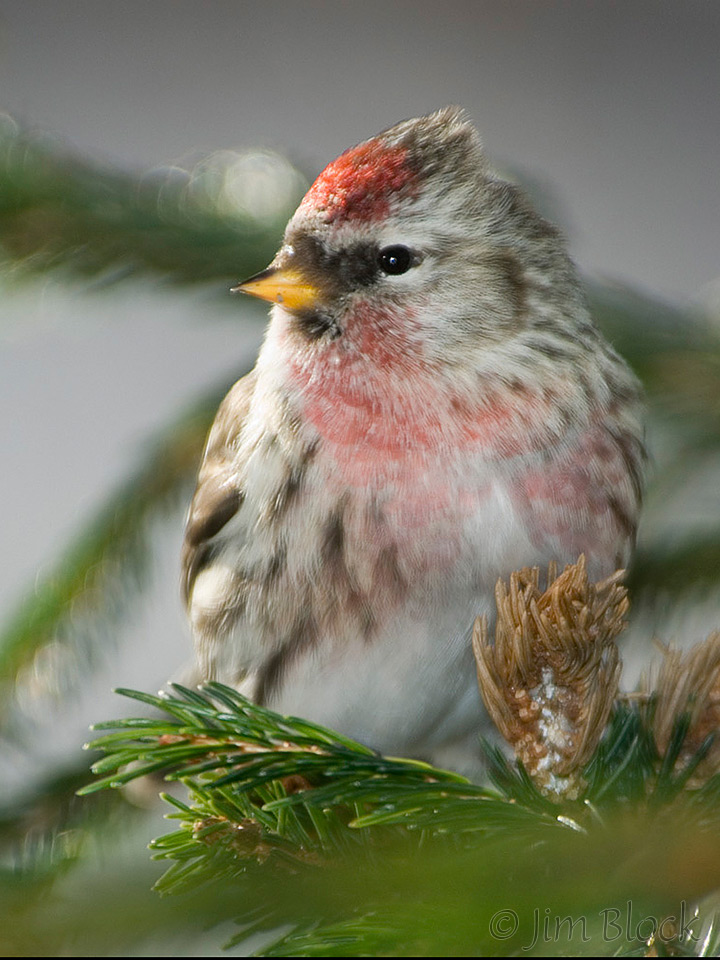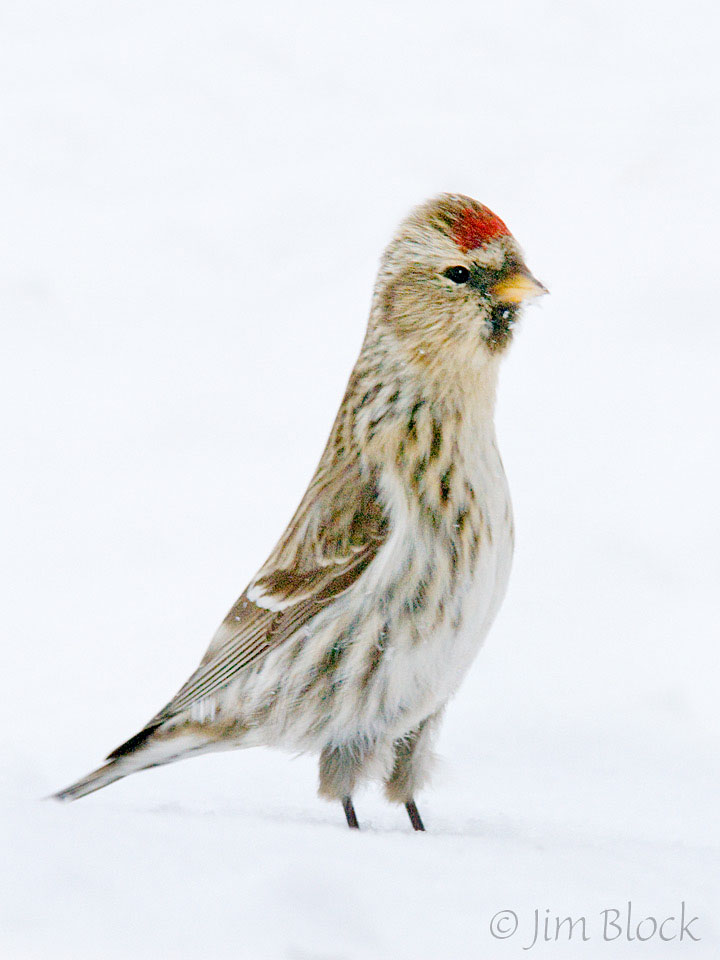Winter is the season for entertaining visitors, perhaps including some who come great distances by air. The majority who fly to visit us do not drop in unannounced and unexpected. But some of our northern neighbors seem to have a habit of doing this every few years in winter. This commonly happens when food up north is scarce. These visitors sometimes arrive in huge numbers, and sometimes come singly. Look for them this winter when you are out and about.
Here are photos of 5 species of birds that visit NH and VT in the winter…sometimes. They commonly venture south from Canada when food is scarce up north. Pine Grosbeaks, Bohemian Waxwings, and Common Redpolls can be seen in great numbers some years and be completely absent other years. Owls such as the Northern Hawk Owl and the Snowy Owl usually arrive singly and are special treats to see.
Owls—Northern Hawk (upper left) and Snowy
When a Snowy or in particular a Northern Hawk Owl arrives in NH and VT it normally take up residence in one spot and stay for an extended time. There are birding list serves you can join to get alerted by email when they arrive. However, if you join a list serve, be prepared to receive many emails reporting sightings of much less common species also. These owls are special. Few of us have been fortunate to see them in the wild. Many years ago a Snowy Owl visited my backyard briefly. And the Northern Hawk Owl is real treat to brighting a cold winter day. The photos of these owls here were taken in different years in Vermont and during snowstorms!
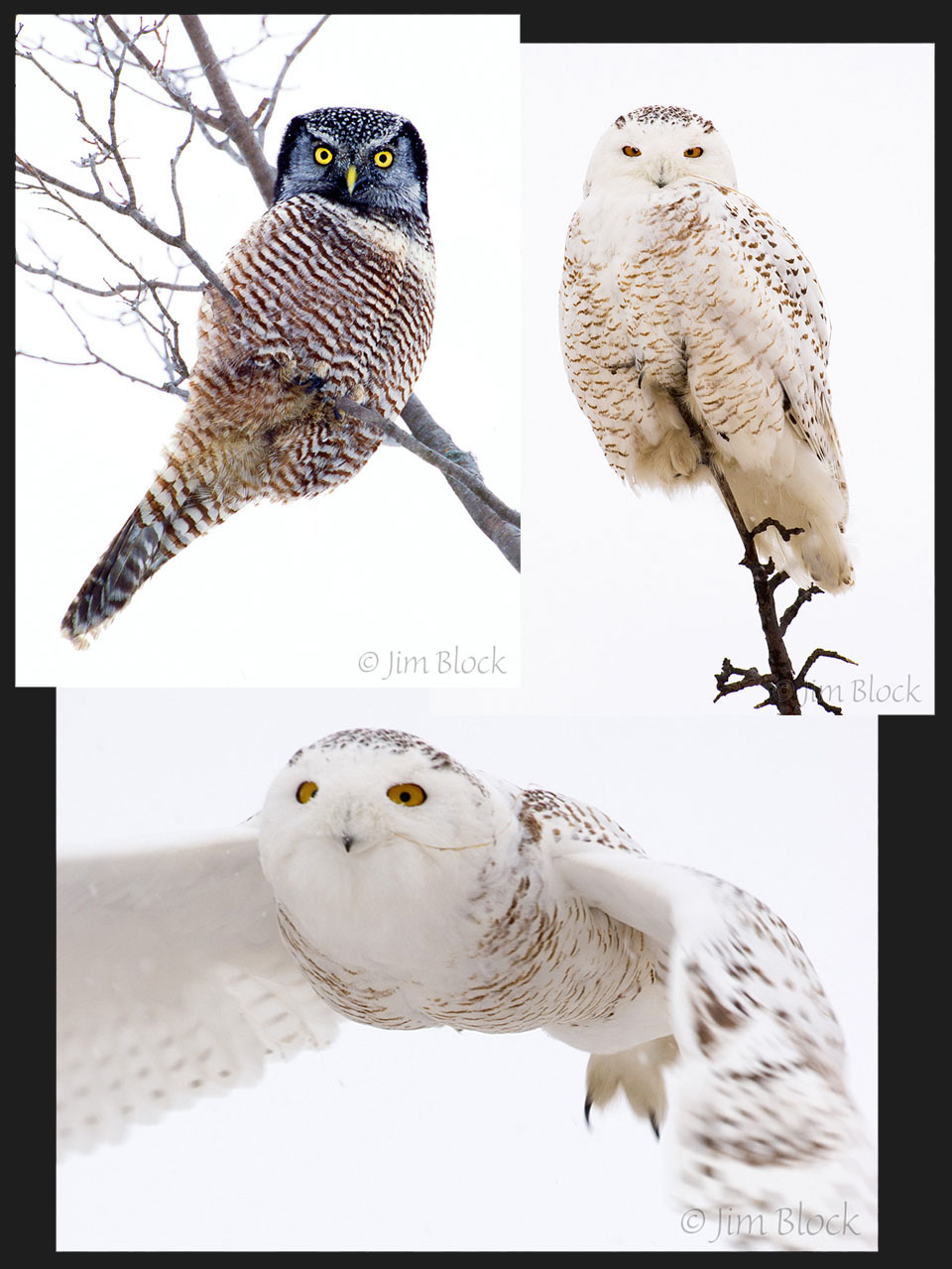
Pine Grosbeak
The beautiful Pine Grosbeak is a finch that sometimes visits when the weather is cold and the nuts and seeds up north are scarce. The males are pinkish-red and the females are yellow and gray. They are normally in small flocks, but sometimes in large numbers overrunning crabapples and other ornamentals. They do not fear residential areas and can often be approached quite closely. The first time I remember seeing them was many years ago when I looked out my kitchen window and saw some birds that I did not recognize. I grabbed my camera, walked quite close to the group of perhaps 8 to 10, and got some photos. Later I identified them with help from a book and confirmed the ID with my slides.
Bohemian Waxwings
Perhaps the most colorful of the birds we see only during the cooler months is the Bohemian Waxwing. They are fairly easy to photograph since they tend to ignore anything else when they feed on berries of trees and shrubs. Unless one spots danger and alerts the others. Then the whole flock, sometimes 50 to 100 birds, can explode as one and flee to the top of a nearby tree. They sometimes are in a mixed flock with Cedar Waxwings, but after a bit of experience it is fairly easy to identify which are Bohemians and which are Cedars. If you see a waxwing in summer in Sunapee it is almost certainly a Cedar.
Common Redpolls
Another species that can arrive in large flocks is a finch, the Common Redpoll. They also are easy to see and photograph because they are attracted to backyard feeders, but do not look for them in New London in the summer. Like the Bohemian Waxwing, this is an “irruptive species” that can be found in some years and be completely absent from the area in others. When these birds arrive in significant numbers it is said we are having an irruption—a dramatic, irregular migration of large numbers of birds to areas where they aren’t typically found.

